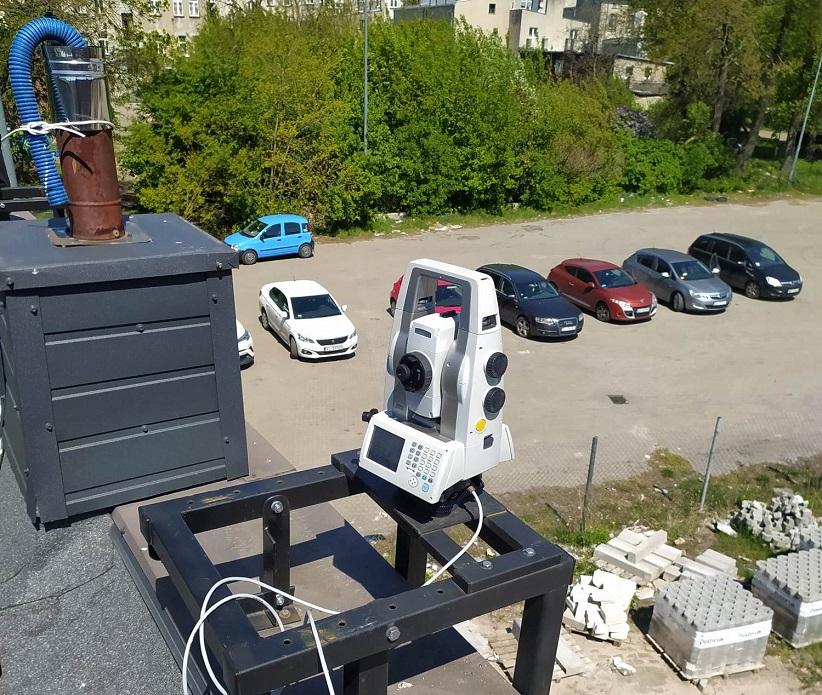A unique laboratory in Poland is under way in the Main Building of the Warsaw University of Technology
The Displacement and Deformation Monitoring Laboratory is a teaching infrastructure that will be used by students to perform measurements of horizontal displacement testing and deflection modelling, and to acquire the ability to use terrestrial laser scanning in displacement research, among other things. The laboratory is being constructed as part of a teacher grant.
The project is implemented by two faculties: the Faculty of Geodesy and Cartography and the Faculty of Building Services, Hydro and Environmental Engineering. It is the students of these faculties who will use the new laboratory on the subject "Monitoring of displacements of endangered objects" and "Geodetic displacement measurements" in the first-cycle studies, and "Special measurements" and "Displacement measurements and deformation analysis" in the second cycle of studies, among other things.
“Students will be able to independently perform measurements, carry out analyses, and, consequently, they will acquire practical skills in the field of structure monitoring,” says Professor Janina Zaczek-Peplinska from the Faculty of Geodesy and Cartography, who is also the head of the Division of Engineering Geodesy and Measurement Systems and conducts classes in the field of geodetic monitoring.
The laboratory will offer classes in three basic areas:
- Performing classic measurements of horizontal displacement testing – for this purpose, the laboratory will be equipped with wall-mounted stations which will facilitate temporary installation of precision total stations, i.e. devices that are used in monitoring, e.g. at the underground stations. On the other side of the wall, precision prisms will be installed on micrometre tables, which will facilitate the simulation of changes depending on the stage of construction, analysed as part of classes.
- The use of reflectorless measurements, in particular terrestrial laser scanning in the study of displacements – a special grid will be mounted on the wall, which will facilitate the modelling of surface changes. The observation posts mentioned in item 1 will facilitate the observations of the changes taking place in real time, using scanners. An automatic system, which is currently being developed by the employees of the Division of Engineering Geodesy and Measurement Systems of PW as part of the NCBR: IMSGeo project, will also be used for observations.
- Becoming familiar with geotechnical sensors, i.e. deep-sea inclinometers, which are operated using inclinometric probes and inclinometric chains (vertical and horizontal). In addition, there will also be a wall in the studio on which students will be able to model deflections. Their observation will take place using small point sensors and a wall-mounted total station system.
“Our project is extremely innovative because no technical university in Poland and Europe has a teaching laboratory with such equipment,” says Professor Zaczek-Peplinska.
The studio located in room 32A in the Main Building of the Warsaw University of Technology is planned to be opened in autumn this year.


